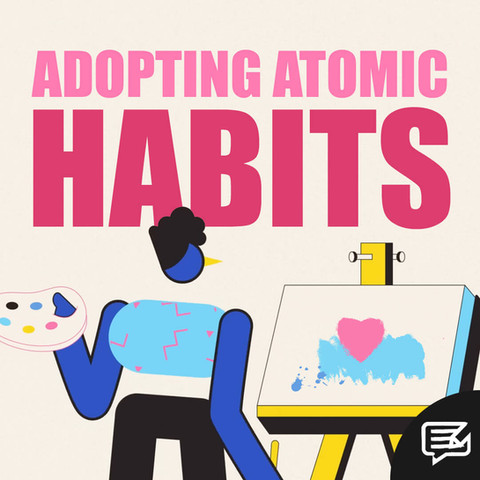
14.06.22
CURBING DEFORESTATION WITH TECHNOLOGY
A 2021 study by WWF found an area of forest totaling 43 million hectares - almost double the size of the UK - was wiped out in just 13 years across the world’s key deforestation hotspots.
Unsurprisingly, commercial agriculture was found to be the leading cause of deforestation. The Amazon rainforest is approaching a tipping point, where scientists fear losing a further 5% of area could lead to runaway climate change. Finding a solution is now a race against time.
Enter tech, stage right. Satellites and technology employed by governments and environmentalists to monitor tree removal can help facilitate change on the ground - but only if the information they gather can reach the right people.



Imagine a world where you don’t breathe. You can’t. It wouldn’t be able to sustain life. Our rainforests are famously the ‘lungs of the earth’. They play a vital role in the homeostasis of our planet – its ability to sustain life - by converting carbon dioxide to oxygen. Without them, we would be no more. Not that you could tell, if you were to witness their destruction at the hands of commercial, as well as other more nefarious, agendas.
Satellite technology is being used to help us to understand and quantify the effects of deforestation in real time. Last year the BBC reported that government and environmentalists have invested heavily in the use of satellite technology to monitor the removal of trees over the past 40 years.
That’s great, but merely counting trees without using the information to create meaningful change isn’t going to get us out of the mess we’re already in. Unfortunately, things have already gone too far. It’s going to take some dynamism to begin to turn back the clock. The article continues:
“Governments in Brazil, Peru and Colombia have put in place a system of high-resolution deforestation alerts, but there is little evidence that this information reaches the indigenous communities most affected.”
It’s bad enough deforestation affects the tree count, but that’s just one part of the picture. Native plants and animals, and the homes of indigenous communities are also directly impacted. Over 3,000 indigenous territories have been identified within the Amazon Biome.
A novel idea has been trialed that combines technological know-how with community engagement for a two-pronged approach to combat deforestation. It’s a beacon of hope when faced with the inevitable destruction and displacement ahead if things continue on their current, cataclysmic route. The BBC article continues:
“Indigenous people living in the Peruvian Amazon were equipped by conservation groups with satellite data and smartphones. They were able to reduce tree losses by half in the first year of the project.
“In this randomised, controlled study, the authors identified 76 remote villages in the Peruvian Amazon, with 36 randomly-assigned to participate in this new monitoring programme.”
The measure sounds cost-effective, and the results are impressive. But how was it implemented practically? And is it scalable so more communities could benefit? The article continues:
“When satellite information showed suspected deforestation activity in an area, photos and GPS coordinates were loaded onto USB drives and carried up the Amazon river and delivered by couriers.
“The information was then downloaded onto specialised smartphone apps which would guide the community monitors to the suspected locations.
“When the forest patrols confirmed any unauthorised deforestation, they would report back to a general assembly of community members to decide on the best approach.
“But if the community-based forest monitoring methodology could be widely adopted and local governance strengthened, forest loss in the Amazon could be reduced by as much as 20% across all indigenous lands."
Put simply, the initiative sounds like a Neighbourhood Watch equivalent of rainforest tree policing. The programme has demonstrated there is power in community when it comes to reducing crime. If available satellite data is shared with the right people, a tangible impact is possible. The study, although small, yielded some promising results:
“When the researchers examined the impact of the new approach, they found that deforestation dropped by 52% in the first year, and by 21% in the second.
"On average, those communities managed to avert 8.8 hectares of deforestation within the first year. But the communities that were most threatened, the ones that had more deforestation in the past were the ones pulling more weight and were reducing deforestation more than in others."
Importantly, the communities who are directly affected by deforestation in the Amazon welcomed the results of the peer-reviewed study, which was among the first of its kind to show the benefits of empowering local communities.
At present, more than 60% of all deforestation is due to mining, drilling, farming and grazing of livestock. Wildfires, urbanization, and forestry practices are responsible for the remaining 40%. Palm oil, present in everything from processed food to personal care products, is also a major driver of deforestation.
With so many contributing factors, reducing the impact of deforestation demands a rigorous technological approach. Replanting can’t keep up with habitat loss according to this article in BioFriendly Planet magazine, but harnessing technology to revolutionize the planting process is another way to counter deforestation effects. One such method is the UAV system:
“The designed planting systems are comprised of an unmanned aerial vehicle (UAV) with a machine learning software. The software technique is fully automated and offers the benefit of being extremely less expensive, yet can work faster to combat the impacts of deforestation. It is estimated the machine can plant ten seeds per UAV per minute. With this, a billion trees can be planted annually.
“Besides being economical and quick, the technique offers many advantages. Its mapping technology can be useful to enhance the uptake rates and likelihood of the healthy development of the forest. This gives the plantation technique an edge when it is carried out by the UAVs. The benefit is inaccessible with a land base approach, and thanks to the technology can now be reached.
“The drone fires pods into the ground, which enables planting of a large number of trees in less time. Every pod is loaded with a pre-germinated seed in a nutritious hydro-gel that gives the most favorable mineral environment and all the moisture needed to sprout it out.”
It’s a great example of how we can use automation for the benefit of our environment. Where those trees are planted, it seems, is an important factor to consider too. As reported by the BBC:
“According to a 2007 study that has been repeatedly confirmed, the best place to plant new trees is the tropics, where trees grow fastest and thus trap the most CO2. In contrast, planting trees in snowy regions near the poles is likely to cause a net warming, while planting them in temperate climates – like that of the UK, much of Europe and parts of the US – may have no net effect on climate.”
These solutions, while innovative, don’t address the crux of the problem - the incessant demand for more resources than the earth can sustainably provide, while supporting life – but they can at least play a positive part in reducing that impact.
As rainforest activist Dorothy Stang is quoted as saying: “The death of the forest is the end of our lives”. It’s a sobering thought, one we can no longer ignore.

























































